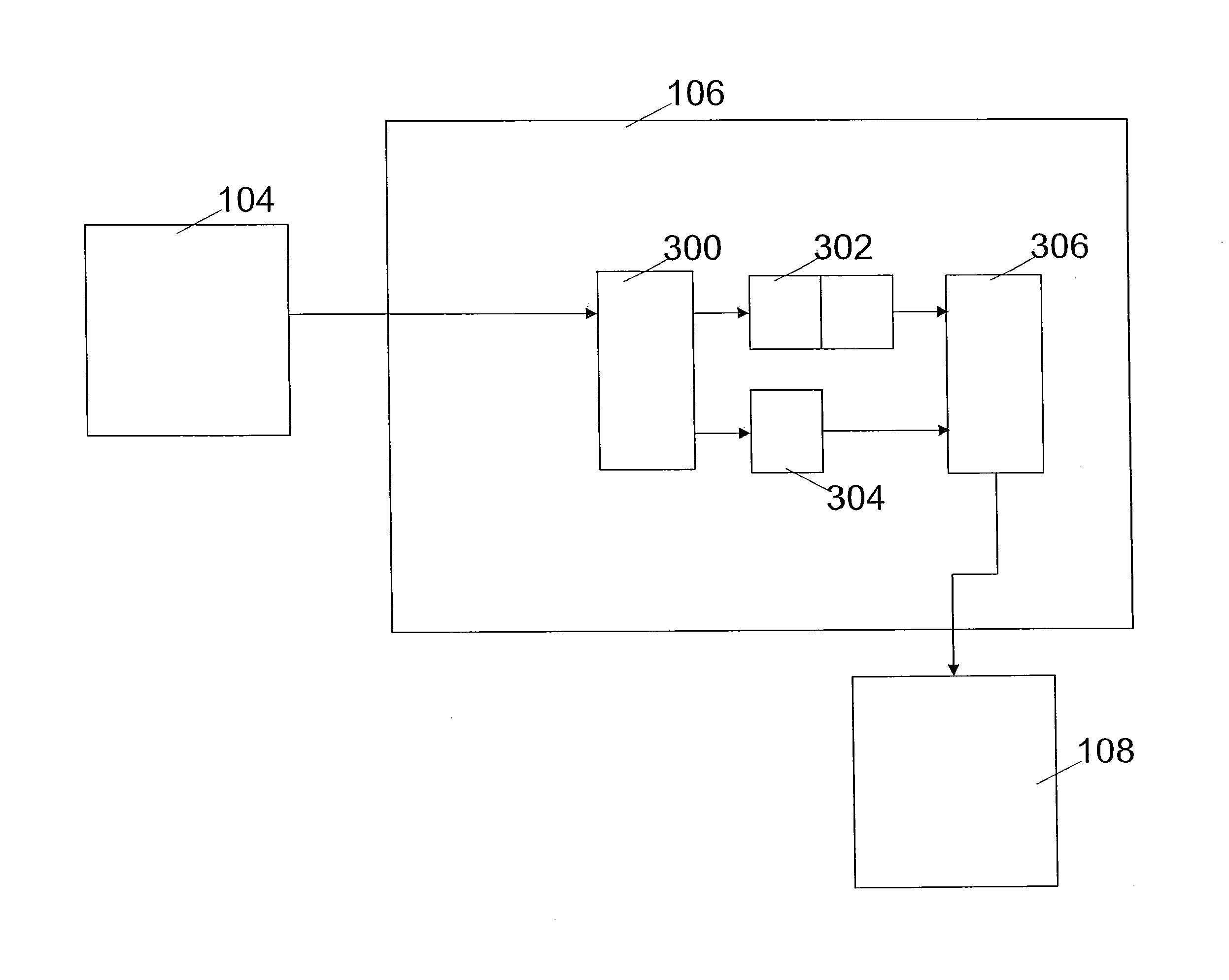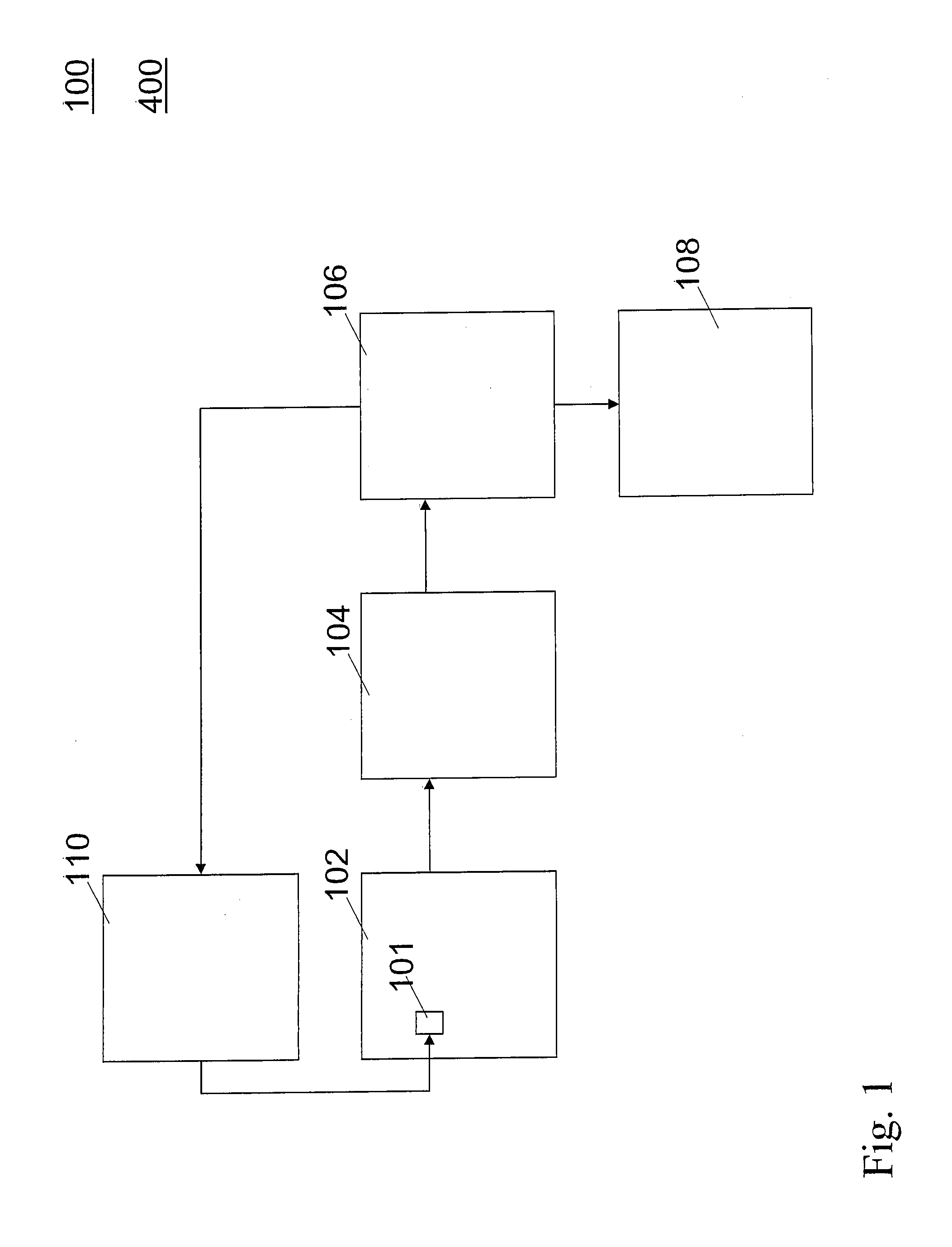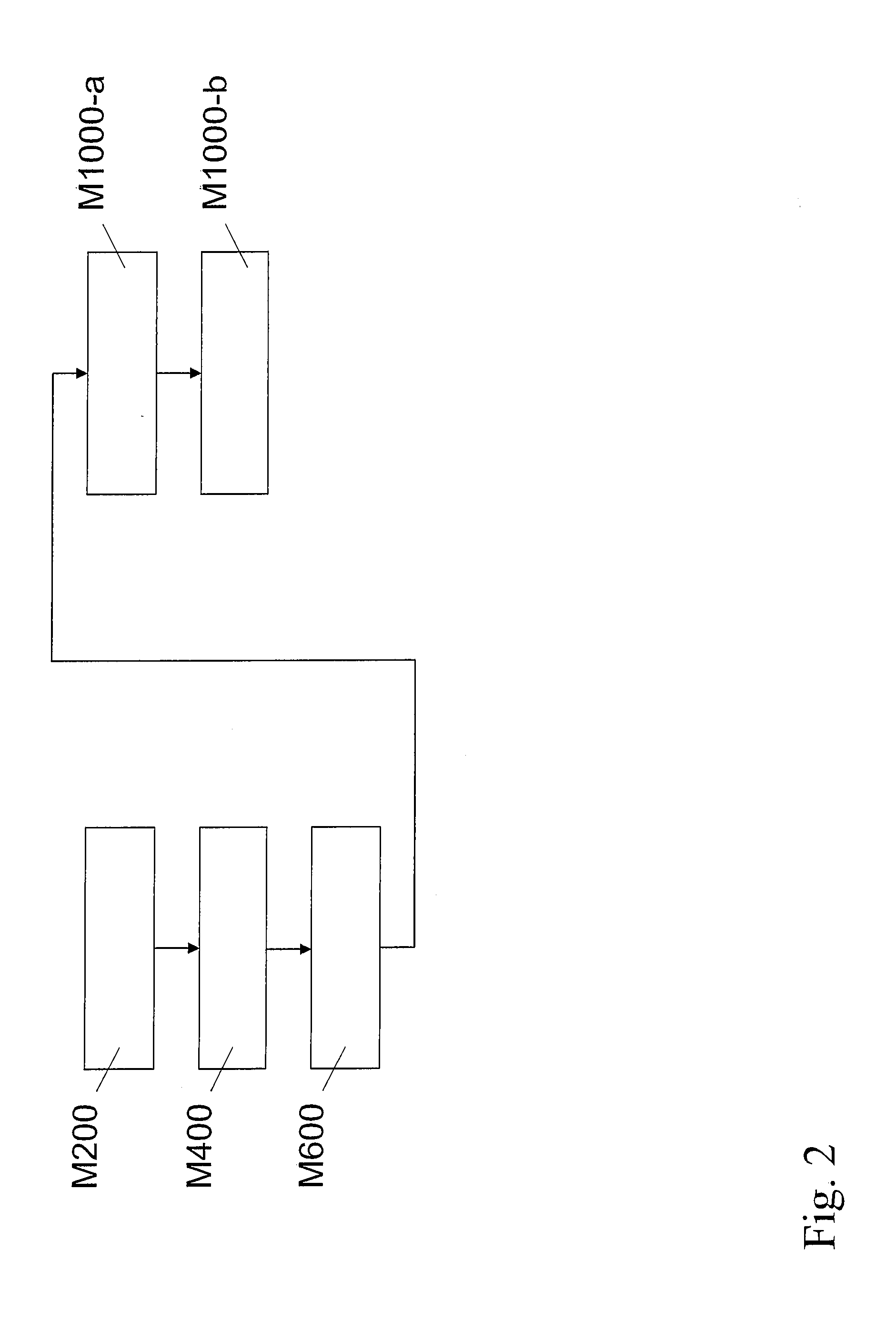Method for secure data reading and data handling system
a data reading and data processing technology, applied in the field of data reading for a data processing system, can solve the problems of further disturbance of the operation of the device employing the method, failure of the device operation, and thwarting of the attack, so as to improve the detection of fault attacks
- Summary
- Abstract
- Description
- Claims
- Application Information
AI Technical Summary
Benefits of technology
Problems solved by technology
Method used
Image
Examples
first embodiment
[0158]In FIG. 2 a flow chart is shown that illustrates the method for secure data reading according to the invention.
[0159]The first embodiment comprises the following steps: dispatching a first read request (M200), dispatching a second read request (M400), dispatching a further first read request (M600), producing an anomaly signal if a first result produced by the memory (104) in response to the first read request does not agree with a further first result produced by the memory (104) in response to the further first read request (M1000-a), producing the anomaly signal if a second result produced by the memory (104) in response to the second read request does not agree with expectancy data associated with the second read request (M1000-b).
[0160]Expectancy data associated with the second read request can come from a variety of sources, for example: by comparing with a further or earlier read request for the same data, by performing the second read request in a test mode, which will...
second embodiment
[0170]In FIG. 3 a flow chart is shown that illustrates the method for secure data reading according to the invention.
[0171]The second embodiments employs the same steps as the first embodiment but, in addition, performs a dispatching of a further second read request (M800). The dispatching (M800) is to be performed after the dispatching (M600) and before the anomaly signal producing (M1000-b).
[0172]In step (M1000-b), the expectancy data associated with the second read request is the further second result produced by the memory (104) in response to the further second read request.
[0173]This embodiment will detect all long fault attacks up to and including those covering 3 successive read requests. Only a fault attacks covering all four read requests may go undetected. Other embodiments, such as shown below, do not suffer from this limitation.
third embodiment
[0174]In FIG. 4 a flow chart is shown that illustrates the method for secure data reading according to the invention.
[0175]The third embodiment employs the same steps as the first embodiment but, in addition, performs the steps of configuring the memory (104) in a test mode (M300) and reconfiguring the memory (104) in a non-test mode (M450). The memory (104) has the property that, while configured in a test mode, the memory (104) will give an expected result, which is independent of the true content of the memory (104). The expected result may be constant for all read requests dispatched to the memory (104), or the expected result may depend on the individual read request. For example, the memory (104), while configured in test mode, may always give a constant value, e.g., zero. Or the memory (104) may give a value depending on the read request, e.g., a copy of an address comprised in the read request.
[0176]The configuring (M300) is to be performed before dispatching the second read...
PUM
 Login to View More
Login to View More Abstract
Description
Claims
Application Information
 Login to View More
Login to View More - R&D
- Intellectual Property
- Life Sciences
- Materials
- Tech Scout
- Unparalleled Data Quality
- Higher Quality Content
- 60% Fewer Hallucinations
Browse by: Latest US Patents, China's latest patents, Technical Efficacy Thesaurus, Application Domain, Technology Topic, Popular Technical Reports.
© 2025 PatSnap. All rights reserved.Legal|Privacy policy|Modern Slavery Act Transparency Statement|Sitemap|About US| Contact US: help@patsnap.com



